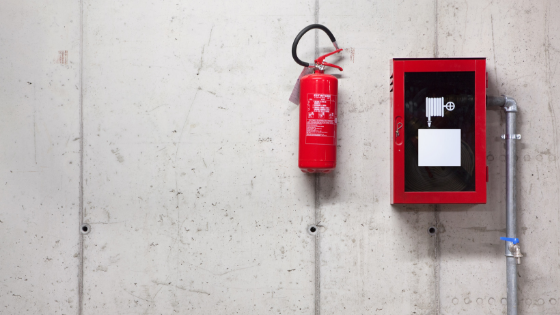Fire extinguishers are among the most valuable tools in a fire safety and prevention plan, but only if they’re available at critical moments and your team knows how to use them safely and effectively.
Fire extinguishers are often required by OSHA and other agencies, which may include the number of devices you must have and where they must be located.
Companies must understand some basic safety when it comes to fire extinguishers to maximize their impact.
The Benefits of Widespread Availability of Fire Extinguishers
A fire extinguisher is much like insurance: you purchase it hoping you never need to use it. No one wants to have to use a fire extinguisher, because having to do so means that there’s a danger to people and property.
Though you may never need to use a fire extinguisher at your company, it’s easy to see why you’d want to have one within arm’s reach. They offer peace of mind that in the event a fire occurs, you won’t have to look far to find help.
Fire extinguishers shouldn’t be used as a comprehensive firefighting method. However, if you were to become trapped in a burning building, they can help snuff out smaller flames and clear a path so you can escape.
How to Use a Fire Extinguisher
Before using a fire extinguisher, make sure the following criteria apply:
- You have been trained on how to operate the fire extinguisher.
- You have an alternative escape path if you can’t put out the fire.
- You are aware of what’s burning and are using the proper extinguisher.
- The fire is small enough to be extinguished.
The most common way to properly use a fire extinguisher follows the PASS method:
- Pull the pin between the handles.
- Aim the hose or nozzle at the base of the fire, leaving a distance of 6-10 feet between you and the fire.
- Squeeze the fire extinguishers handle.
- Sweep the extinguishing hose or nozzle from side to side to cover the base of the fire.
Best Practices on Creating a Fire Extinguisher Safety Plan
Creating a fire extinguisher safety plan isn’t as simple as making the devices available in your company. Consider these best practices when developing your plan for the best results:
Know How to Operate a Fire Extinguisher Before You Need It
Fire extinguishers are required to contain usage instructions on the device itself. But when an emergency breaks out, the last thing you want to do is spend valuable seconds reading instructions that could be the difference between control and chaos.
Spend time training your employees to properly use fire extinguishers. You may also cover the various classifications of extinguishers, what each one is used for, and the dangers and risks associated with each one.
For example, Class A fire extinguishers are filled with dry chemicals or water and are used on most combustibles. Class B fire extinguishers were created for flammable gases or liquids, while Class C fire extinguishers are meant for electrical components. Finally, Class K fire extinguishers are mainly used in commercial kitchen fires. Many fire extinguishers offer an ABC classification that can be used for a variety of purposes.
Your employees should know that though fire extinguishers can put out flames, they can also cause additional damages. For example, an ABC-rated fire extinguisher may harm electrical components upon contact. Water extinguishers shouldn’t be used on electrical fires to avoid the risk of shock or electrocution.
Share the Locations of All Fire Extinguishers
Searching for a fire extinguisher can waste precious time that can easily let a fire get out of control. It’s important that fire extinguishers are clearly marked to be located quickly.
When deciding how to draw attention to fire extinguisher locations, consider what a situation may look like when a fire erupts. The room may fill with smoke. The power may go out. Obstacles may be blocking the path to the extinguishers.
With realistic scenarios in mind, you’re better able to consider elements like signage, lighting, and accessibility to ensure that those who need the fire extinguisher can retrieve it without issue.
When applied correctly, fire extinguisher safety can be lifesaving. Put the above information to work in your safety plan and hope you never have to use it.
Further reading: 8 Workplace Safety Tips to Share at Your Next Safety Meeting
